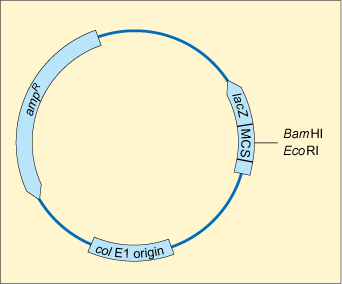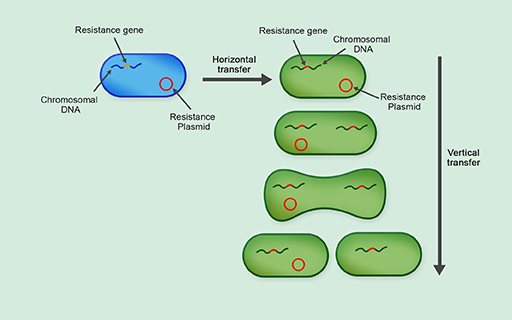2.1 Plasmids
In Section 1.3, you saw how chromosomal DNA can be copied and transmitted to the next generation via vertical gene transfer. Unlike humans, bacteria contain additional, non-chromosomal DNA which can be replicated independently of the genomic chromosomal DNA. These non-chromosomal genetic elements are called plasmids
Plasmids are small, circular pieces of DNA which often carry genes associated with a specific function: for example, antibiotic resistance (Figure 5).

Unlike vertical gene transmission, where chromosomal DNA is replicated and then transferred from parent cells to daughter cells through binary fission, plasmids are usually transferred by horizontal gene transfer. This is the process of swapping genetic information between two unrelated cells. In contrast to vertical gene transmission, it does not require binary fission and can occur between bacteria of the same generation, not just between parents and daughters, and even between bacteria of different types (Figure 6).
Can you suggest why horizontal gene transfer is the primary mechanism of spreading antibiotic resistance?
Horizontal gene transfer allows plasmids carrying antibiotic resistance genes to spread rapidly between different types of bacteria. Thus species of bacteria that are intrinsically sensitive to a given antibiotic rapidly acquire resistance genes, making them insensitive to treatment with that antibiotic.
There are three mechanisms of horizontal gene transfer:
- conjugation
- transformation
- transduction.
You will now look at each mechanism in more detail.

